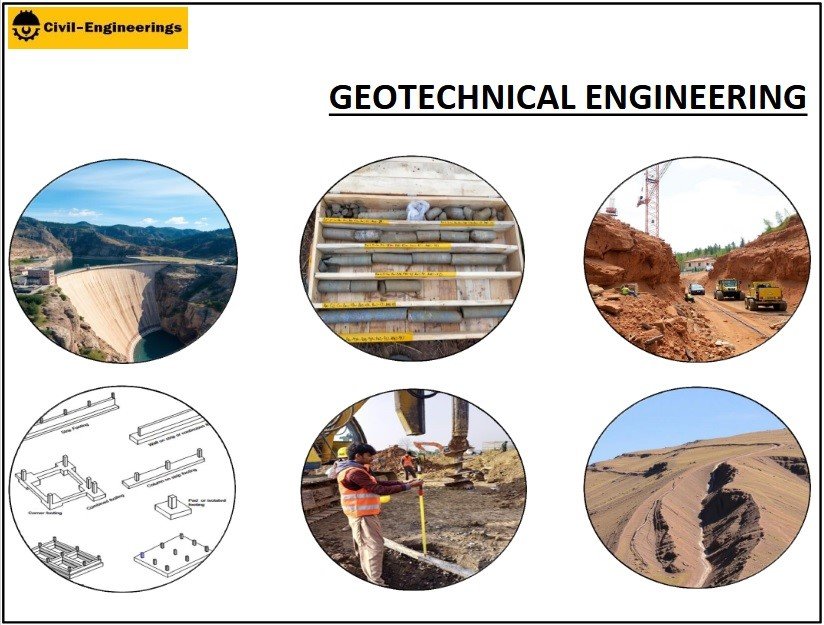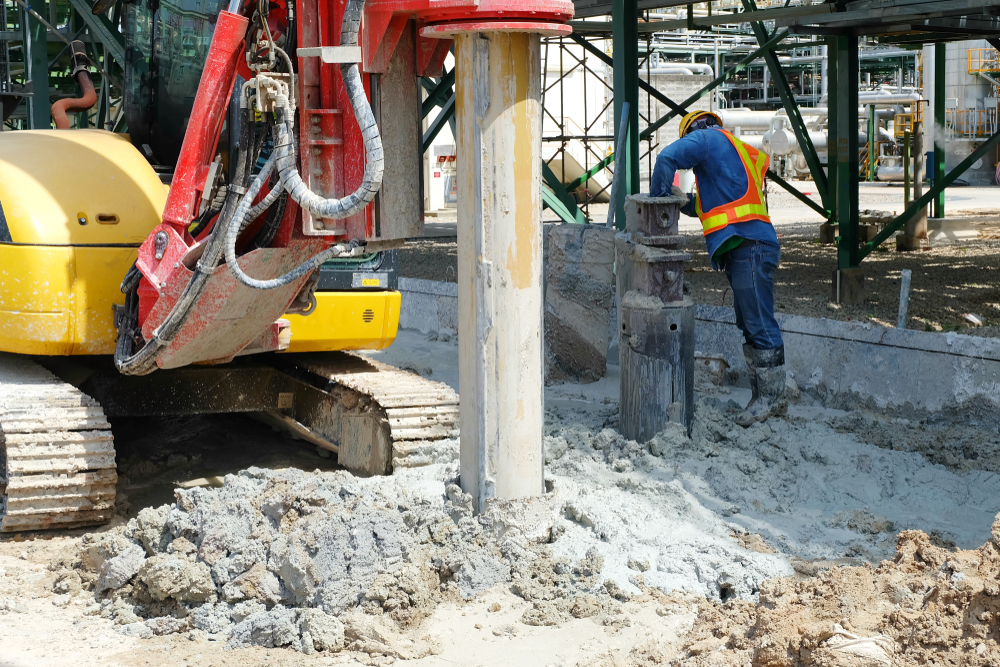Some Known Factual Statements About Geotechnical Engineering For Construction Projects
The smart Trick of Geotechnical Engineering For Construction Projects That Nobody is Discussing
Table of ContentsUnknown Facts About Geotechnical Engineering For Construction ProjectsThe Greatest Guide To Geotechnical Engineering For Construction ProjectsGeotechnical Engineering For Construction Projects Things To Know Before You BuyGeotechnical Engineering For Construction Projects - TruthsGeotechnical Engineering For Construction Projects Can Be Fun For Anyone
Therefore, during the examination, it is essential to drill at the required deepness and the required variety of holes according to the suggestion of the Canadian Foundation Style criterion. Sometimes, the proprietor may save some Geotechnical Investigation price yet wind up spending greater than the expected during the construction expense.The obligations of the geotechnical expert include providing product screening for construction assistance. Geotechnical Engineering for Construction Projects. Geotechnical engineers evaluate all the area test reports to make sure that building is taking place as per the job specification. Throughout building and construction, a confirmatory test for dirt compaction is done on-site to guarantee that no future settlement happens
After the concrete is poured -7 days and 28 days- examinations are conducted on concrete samples accumulated from the site to make sure that the concrete put meets the style standard. Asphalt core is taken after the Asphalt is laid and compacted to validate that it meets the style standard. All lab examination records are evaluated by the Geotechnical Designer to make sure that it satisfies the task requirements.
Getting The Geotechnical Engineering For Construction Projects To Work

Geotechnical engineering plays a crucial function in making certain the stability of construction projects. Geotechnical engineering is a vital branch of civil engineering that concentrates on recognizing the behaviour of planet products, such as dirt and rock.

For a trusted foundation and a smooth construction procedure, trust fund to give the expertise you require. Call to get professional guidance and geotechnical services tailored to your next project.
The Facts About Geotechnical Engineering For Construction Projects Revealed
When getting started on a land growth job, comprehending the ground beneath your feet is as vital as the frameworks you prepare to build over it. Our Geotechnical Design team analyse the ground, ensuring it appropriates for the suggested development while providing you with the details needed to satisfy your task goals.
Geotechnical Engineering looks at the development of the ground, as it is the building obstructs for all jobs. Where frameworks need to be designed relative to the ground problems; ground problems (e.g., soft ground) may call for strengthening relying on the size of the intended structure. Prior to structure, you require to know concerning the groundwater, dirt structure, and liquefaction possibility of your land.
For sites that are not attached on the local authority facilities extra website examinations would certainly be required to give technological inputs for on-site stormwater and wastewater. We have actually experienced Geotechnical Engineers based in each workplace, supporting your geotechnical needs across the country. Reach out to us to go over just how we can sustain your next project.
These reports are customized to fulfill the specific demands of a task and include layout criteria and recommendations for the construction of a series of man-made structures. In addition to supplying working as a consultant solutions covering locations such as incline security and load-bearing abilities for different materials, these look at more info designers carry out r & d activities to improve approaches, tools, materials expertise and evaluation covering whole lifecycles.
What Does Geotechnical Engineering For Construction Projects Do?

Nevertheless, rates of pay normally boost as your knowledge and skills expand, with guidelines indicating a graduate beginning salary of between 18,000 and 28,000 per year in the UK. This increases to 26,000 to 36,000 with a couple of years of experience and then reaching 40,000 to 60,000+ for senior, chartered or master designers.
Nevertheless, with the right application it is possible to master the career and gain entrance to a tough yet fulfilling and crucial job. A geologist would certainly need to re-train to become a geotechnical engineer, although there is a lot of cross-over between both professions, which could make this easier - Geotechnical Engineering for Construction Projects. Geologists need to have an understanding of dirts, rocks and other materials from a clinical viewpoint, while geotechnical designers story their knowledge of matters such as soil and rock technician, geophysics and hydrology and use them to engineering and environmental tasks
When starting, these engineers will have a tendency to function on much less intricate jobs, accumulating expertise and experience ready for even more difficult work later on. Geotechnical designers often tend to be experts in certain locations as they expand in experience, concentrating on certain infrastructures such as railways, roadways or water. These designers also work with sustainable power, offshore and onshore oil and gas, nuclear power, and a lot more.
How Geotechnical Engineering For Construction Projects can Save You Time, Stress, and Money.
The time taken to become a geotechnical engineer depends on where you are based, where you study and what level of education and learning you desire to achieve prior to going into the click here now work environment. Generally-speaking it takes 3-4 years to reach the fundamental needs to begin a job as a geotechnical engineer.
These procedures make it possible for specialists to examine a host of soil technicians including weight, porosity, void-to-solid bit proportion, permeability, compressibility, maximum shear toughness, birthing capability and contortions. If the framework calls for a deep structure, designers will make use of a cone infiltration test to estimate the quantity of skin and end bearing resistance in the subsurface.
When evaluating an incline's balance of shear tension and shear strength, or its capacity to hold up against and undertake activity, rotational slides and Resources translational slides are generally thought about. Rotational slides fall short along a bent surface area, with translational slides taking place on a planar surface area. An expert's goal is to figure out the conditions at which an incline failing can occur.
Frequently, findings suggest that a website's soil should be dealt with to boost its shear strength, stiffness and permeability prior to style and building and construction. When it comes time to set out foundation strategies, experts are increasingly concentrated on sustainability, more specifically exactly how to minimize a structure's carbon footprint. One technique has been to replace 20 percent of a structure's cement with fly ash, a waste item from coal fire nuclear power plant.